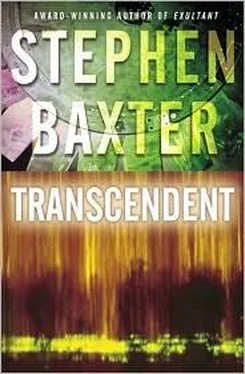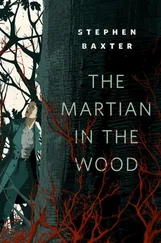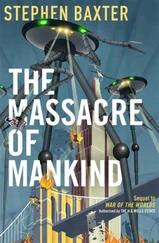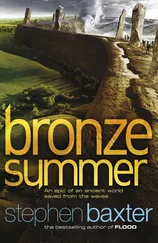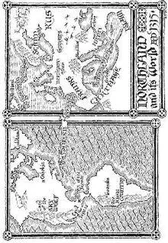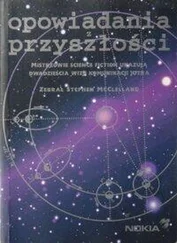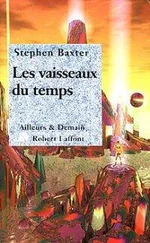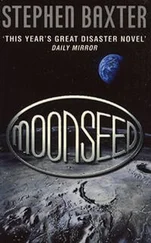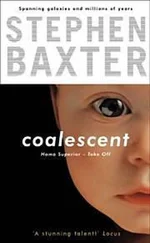Bale asked, “Do you feel better yet?”
“I think so. She felt uncomfortable to show him weakness, or nervousness. “Are we going to those buildings?”
“Yes—”
“Then let’s do it.” She ran forward, across the apron. To her astonishment she tired within a few paces. She looked back at Bale, baffled.
Gently he told her that she had to learn how to function in a high-gravity field. Here, as on old Earth in fact, gravity was so high that it was actually energetically more efficient to walk, to clump along on one foot after another, than to run. In low gravity it was easier to run, spending most of the time in the air as you paddled across the ground. This struck her as absurd, but she hadn’t had to walk far enough on the water-world to learn this subtle lesson. Bale showed her how to do it, and a few experiments proved he was right.
They walked, then, to the township.
The buildings were just cubes and cylinders, squat and massive as the people who had built them. None of them was large, just collections of a few rooms jammed together. Servitor machines toiled in scraps of garden, bright green amid the predominant rust color. And all the buildings were boxes of iron, mined from the ground.
“Welcome to our home,” Bale said. He pointed at one nondescript building. “That’s where we live, where you will stay.”
Alia had come here to study; she had expected something more formal. “Where’s the seminary?”
“We don’t have a seminary,” Denh said, or maybe Seer.
Bale put a massive fist over his heart. “It’s what’s in here that we’re interested in. Not buildings.”
Alia sighed. “Fine.” She walked forward, trailed by her sluggish baggage, looking for her room. She had to duck to avoid the ceilings.
We flew into Heathrow.
The huge airport was much diminished, as all airports were. Our plane was a gnat flying down onto an immense carpet of tarmac, where once a plane had landed every three minutes, day and night, and now nothing moved but the mice, and the grass in the wind. But on the fringes of the site I glimpsed some construction. The developers were putting up a theme park. Eventually the contents of all Britain’s aviation museums would be emptied out here, Jaguars and Harriers and Tornadoes, venerable World War Two Spitfires and Lancasters and Hurricanes more than a century old but still flying, even a Concorde or two. From the air the old planes looked like birds forever pinned to the ground.
As we made our way through the terminal buildings, and more ferocious security checks by British immigration, Jack Joy approached me. He asked if I’d like to go into London with him; he had a hotel booked, he was sure he could squeeze out another room, maybe we could have a drink or take in a show, and so on. My plan had been just to wait for Tom to fly in — he was due in a couple of days. But now that we had been released from the confines of the plane I was eager to get away from Joy and his “realism.”
And besides, I’d already decided not to stay in London. As I had sat there in the humming quiet of the plane, mulling over past and future, deeper concerns had surfaced. I did take a train into London, but only to cross the city to King’s Cross, one of the big rail terminals for the lines to the north of the country.
I’d decided to go in search of Morag. So I was going to York.
I don’t remember when her visits started.
Maybe she even came when I was very small, a time now lost in the shining mist of childhood memories. She was always just part of my life. I don’t think it was until I was a teenager, thirteen or fourteen, that I realized that other people didn’t have this kind of experience all the time, that it was just me.
When I finally met Morag, I suffered a shock of recognition.
It was during a work trip to England. I was at a party, thrown by an Irish family, old friends of my mother’s. I just made a beeline for Morag, as if drawn by some invisible force. I think I actually frightened her with my intensity.
When I’d calmed down, we got along fine. With a strong streak of Irish in her, she was witty, bright, funny. Even her job was interesting. She was a bio-prospector; she spent her time searching for new species of ascomycete fungi, a key source of antibiotics. It turned out she was actually a friend of John, whose legal career had taken him in a similarly “modern” direction, as he made money from the great shifting of wealth and population caused by the climate change. In some ways Morag had more in common with John; after all at the time I was turning myself into that old-fashioned beast, a nuclear engineer. But Morag was always “greener” than John; later I always thought that side of her had carried on to Tom.
And with that flame of strawberry-blond hair, she was beautiful.
As our relationship developed, she quickly became herself to me: Morag, not the fleshed-out version of my personal ghost. During the years of our relationship I didn’t see any of my apparitions. After a time, and especially after Tom was born, other, more real concerns crowded into my head. I began to dismiss my visions.
I never told Morag about them.
I always meant to. I just never really figured out how to say it without spooking her. How are you supposed to tell your wife that she has haunted you since you were a kid? In the end, as the visions receded in memory, the thought of even trying to talk about it came to seem absurd, and I put it all aside.
Then she died, and it was too late.
And the hauntings began again. The first, cruelly, was in a bleak hospital corridor where I sat with Tom, just moments after we had learned we had lost her, and the baby.
They were infrequent at first, maybe once or twice a year. They still didn’t frighten me. But after I lost her they became unbearably painful.
In the last year or so, in the months leading up to Tom’s jeopardy, they had been more frequent. Just in the last few days I had seen her on the beach in Florida, and even in my VR trip to Siberia. It felt worse than ever to be haunted. Maybe it was my shock over Tom that did it. A lot of stuff, deep disturbed emotions, had come welling up out of the frozen depths of my mind like Tom’s methane burping from its hydrate deposits.
So I’d decided to do something about it before I had to face Tom in the flesh.
The journey was only a few hours. The train was smooth, clean, comfortable. We shuttled through Peterborough and Doncaster and Leeds and a host of lesser places whose names I knew from similar journeys in the past, but about which I knew little or nothing.
The countryside had changed since the last time I made this trip, though. In the vast fields of swaying wheat and rape and gen-enged biofuel crops there was hardly a tree or a bush to be seen; I saw more robot tractors than birds or animals. The biodiversity of countries like England flatlined when I was a teenager, and isn’t likely to recover any time soon.
And then there was the water.
You could see it everywhere, abandoned roads now permanently flooded to serve as drainage channels or as canals, and artificial flood plains that served as makeshift reservoirs. Much of South Yorkshire was now covered by a new lake. As we crossed it on a raised levee, the water receded to the horizon, and the waves that scudded across it were white-capped; it looked more like an inland sea. I could see the roofs of abandoned houses, the foliage of drowned trees, and the unearthly shape of the cooling towers of dead power plants looming above the water line. The sun was setting, and the water glimmered, reflecting the sunlight in gold splashes. It was all so new the lake didn’t even have a name — or maybe giving it a name would somehow confirm its reality. But geese flapped across the water in a neat fighter-bomber V formation. The geese, at least, seemed to know where they were going, and didn’t seem spooked by this new geography.
Читать дальше
